Problem Interpretation | Cell Gene Knockout Verification Problems: Experimental Technique or Reagent Industry? 【Collection】
2025-04-07
I. Introduction to the Problem Background
In numerous fields, such as life science research, gene knockout technologies (e.g., CRISPR/Cas9) have become commonly used and crucial tools for analyzing gene function, exploring disease mechanisms, and researching drug targets. However, “ Verification after gene knockout ” This seemingly 'insignificant' step is rarely systematically analyzed or prioritized in research papers. However, encouragingly, the antibody quality issue is receiving increasing attention from academia and industry. The International Working Group on Antibody Validation (IWGAV) stated in a 2016 Nature article that "verifying antibody specificity is currently the most important step in ensuring antibody reproducibility."

On November 4, 2024, Diana Kwon published a commentary article in Nature discussing the current status of this issue and the changes being made by academia and industry.
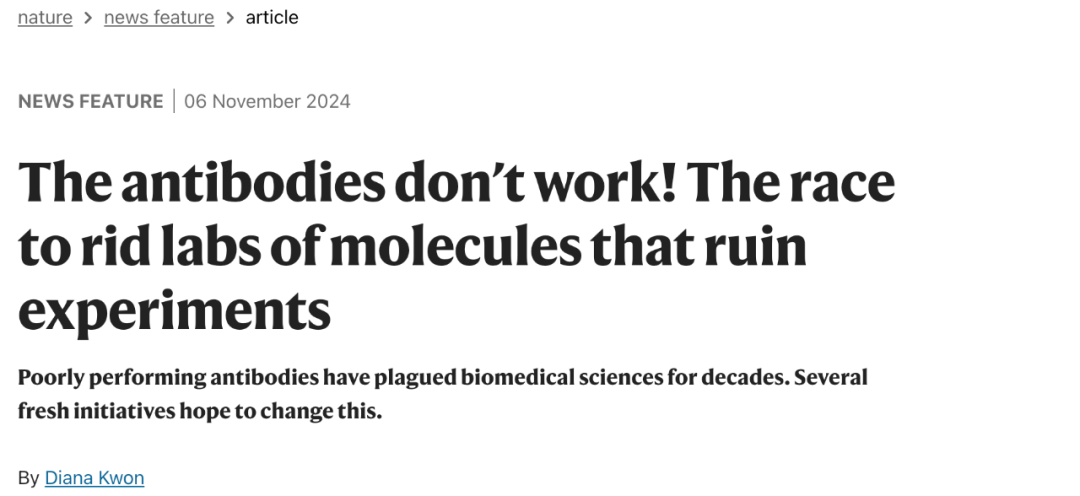
Why does the issue of cell gene knockout verification place such importance on antibody quality?
The reason is: Researchers often "habitually" use the results of "Western Blot" to demonstrate the "success" of gene knockout cells. 。 This habit comes from many aspects: numerous references do this, and senior colleagues and classmates also do this. We won't discuss these two different concepts and their relationship in detail ( Next issue's question interpretation: What constitutes a successful gene knockout? What constitutes a successful WB experiment? Does a successful WB experiment represent a successful gene knockout? ), based on the above thinking, we will continue.
The Leman team focuses on providing cell gene knockout solutions. In the process of providing high-quality services, this "cell gene knockout verification" issue naturally arose. Industry Question Is it simply an experimental technical problem (gene knockout design issues, cell experimental operation issues, WB experimental operation issues, etc.), or is it closely related to scientific reagent industry problems (antibody reagents, etc.)? In fact, it is a complex issue involving many factors. Next, through "typical case analysis," we will try to explain the "after-sales" problems that the customized service industry of cell gene knockout has to face.
Based on the explanation of this problem, the Leman team officially launched:
LM NGMS TM Verification platform ': Leman's "NGS next-generation sequencing + MS proteomics" dual verification system solves the cell gene knockout verification problem from the "root", perfectly bypassing the antibody industry problem (let the "antibody" run a little longer~) ——Cell gene knockout verification "gold standard" verification service
II. Sharing of Typical Cases of Verification Problems
Case 1: Different antibodies from different manufacturers obtain different "knockout verification" conclusions
We found that for the same target protein, there are significant differences in the results detected by antibodies from different manufacturers; the following figure shows the results of WB detection of the same batch of WT cells and KO cell lysates using antibodies from manufacturers A and B. Manufacturer A's antibody showed bands in both WT and KO cells at the target protein size, indicating no knockout effect, while manufacturer B's antibody showed complete disappearance of bands in KO cells at the target protein size, indicating a significant knockout effect. How should we determine the conclusion of the knockout verification in the case of the above results?
( Note: Manufacturers A and B are both well-known antibody manufacturers. Based on Leman's current data, this situation occurs with a relatively high frequency. We will start a new series of WeChat articles "Case Sharing" to systematically and comprehensively promote the display of this type of case: We will disclose target protein information and gradually promote the KO verification process of common targets and high-quality monoclonal antibodies. )
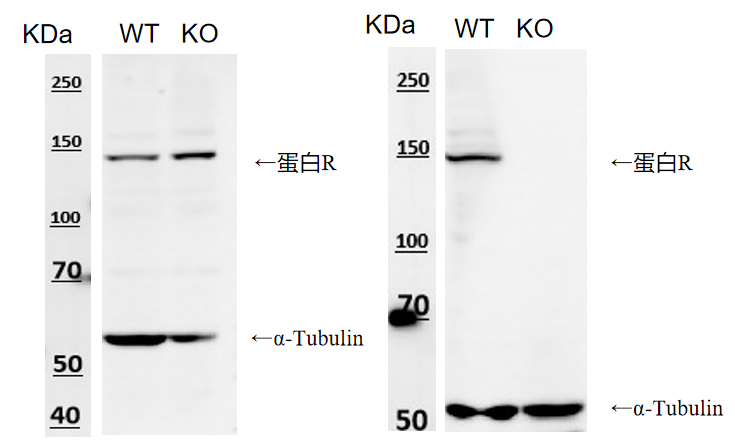
Figure 1 WB results of the same gene knockout cells using antibodies from different manufacturers
Case 2: 100% knockout at the gene level, antibody shows no knockout (only one Abxxx monoclonal antibody on the market)
In a gene knockout cell line we constructed, gene-level verification showed 100% knockout, while WB verification showed that both KO and WT cells had bright bands. In pre-sales analysis, our internal database at Leman showed that this target protein is not expressed at either the mRNA or protein level in this target cell. Based on the conclusive evidence at the gene level and the "not detected" result of the protein expression level (mass spectrometry detection of WT cells). In the case of the above results, we objectively determine the key problem: Can the band in the WB prove the existence of "this target"?
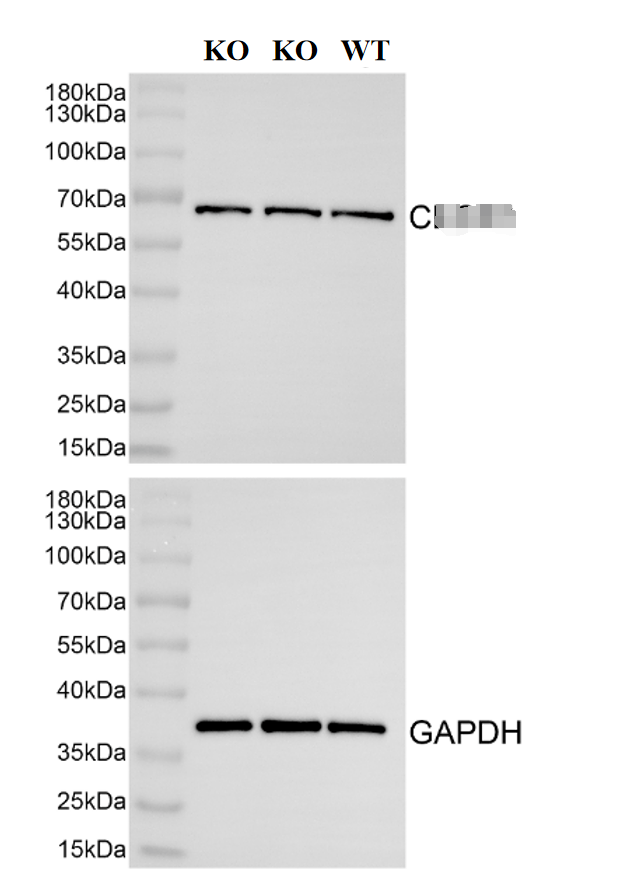
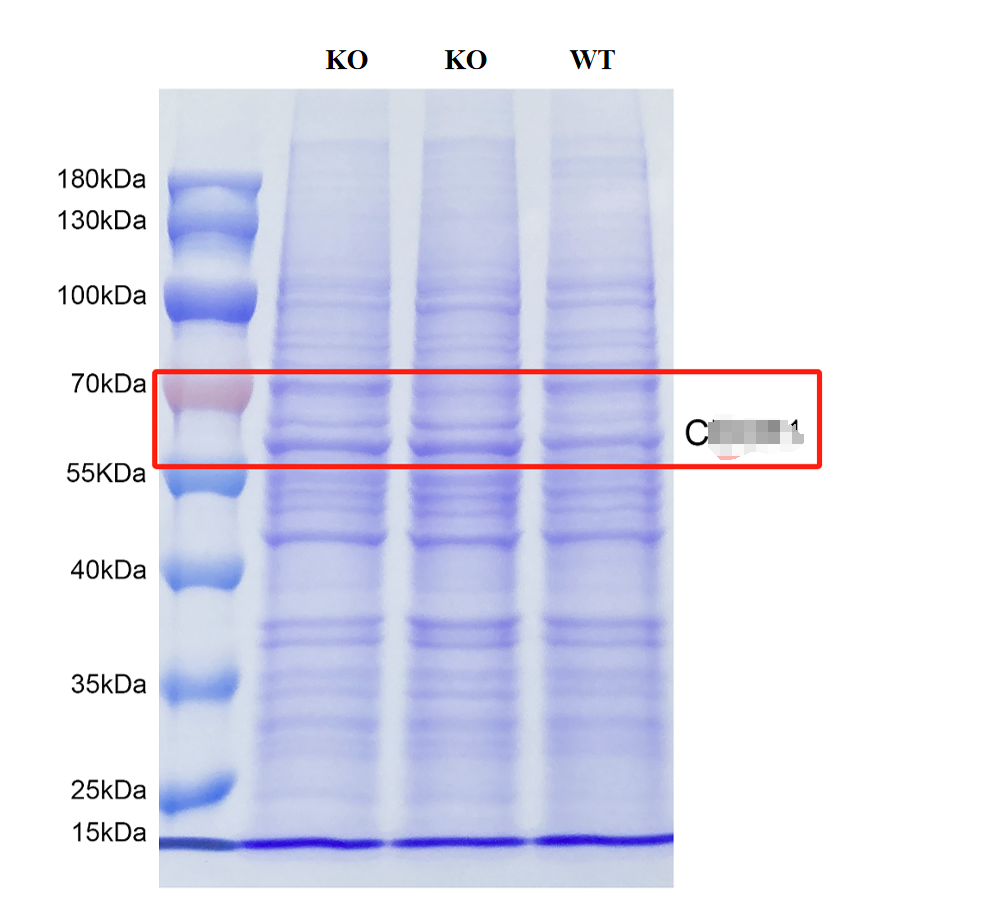
Figure 2 WB detection results of target X from a well-known antibody manufacturer X and display of the gel-excised region of X protein (gel-excised region mass spectrometry detection)
Considering the antibody specificity issue, we excised the protein band and used mass spectrometry to identify the gel-excised band in the target protein size region.
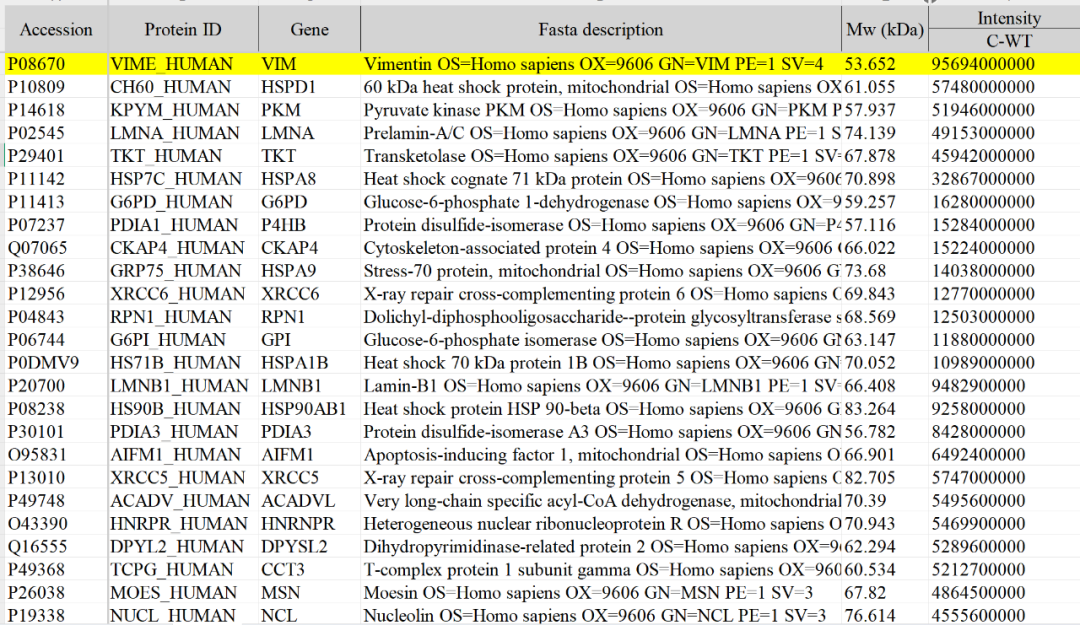
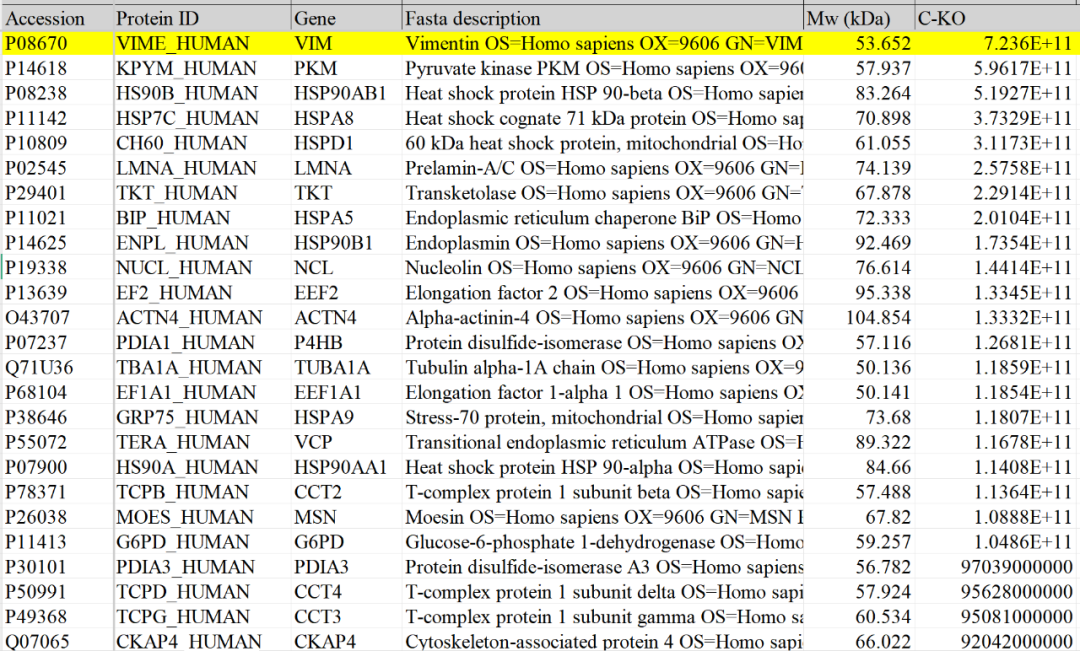
Figure 3 Gel band identification results of WT cell X protein (upper) and KO cell X protein (lower)
The protein gel band identification results show that the target protein C was not identified at the corresponding target band size . This suggests that the band detected by WB antibody may not be the target band, but simply consistent with the expected size of the target protein.
(This result has been communicated with the internationally renowned antibody manufacturer, and customer feedback is being addressed. The Leman team is continuously conducting systematic antibody verification experiments on internationally and domestically renowned scientific antibody manufacturers based on the "LM NGMS verification platform," and provides quality-assured antibody screening services and products for domestic pharmaceutical companies and high-end scientific research customers. Leman KO cell lysate, fully verified at the gene level + mass spectrometry protein level, is now gradually becoming the "standard" for antibody specificity quality control in the domestic scientific research antibody industry.)
III. Overview of Verification Methods After Gene Knockout
(1) Genome-level verification
- Sanger sequencing validation of knockout efficiency: In CRISPR/Cas9 gene editing technology, primers are designed to PCR amplify the knockout region covered by sgRNA. The PCR products of wild-type (WT) and gene knockout (KO) samples are compared by Sanger sequencing. If the base sequence of the corresponding gene in KO cells shows deletion or frameshift mutation that is not a multiple of three, it will cause a frameshift in the subsequent reading frame, often resulting in a premature termination codon (PTC), leading to loss of protein function and achieving the knockout effect. The advantages of this method are simple experimental and data analysis operations, and it can verify the knockout effect at the genomic level. However, the sgRNA and primer design strategies need to be extremely precise and comprehensively considered in the early stage. Leman's proprietary knockout efficiency analysis software can analyze Sanger sequencing results to obtain the genotype of knockout cells and accurate KO efficiency data.
- Next-generation sequencing (NGS) validation of knockout efficiency: Genomic DNA is fragmented, and specific adapters are ligated to both ends of the fragments to construct a sequencing library. Then, the DNA fragments in the library are subjected to high-throughput sequencing using a sequencer to obtain a large number of short sequence reads. These reads are analyzed by bioinformatics and compared with the reference genome to determine the gene editing site and detect the efficiency of gene knockout. It can also perform in-depth analysis of the target knockout region, comprehensively scan the whole genome, detect potential off-target sites and other related gene changes, understand the impact of gene knockout on the whole genome, and provide a more comprehensive evaluation of the gene knockout situation. Leman NGS Next-Generation Sequencing Will comprehensively upgrade gene-level verification capabilities and be included as "standard delivery" in the experimental report. (Please contact us for details)
(II) Protein Level Verification
Protein level detection is an important method for identifying gene knockout effects. The protein expression level is detected by Western blot (protein immunoblotting) or proteomics experiments to determine whether the gene knockout is successful.
- In Western blot detection, proteins extracted from cell lysates are separated by electrophoresis, then subjected to antibody immune reaction, and finally detected by colorimetry or fluorescence to quantitatively or qualitatively analyze protein expression. If the protein expression level is significantly reduced or the band disappears compared to WT cells, it indicates that gene knockout has occurred. However, due to antibody specificity issues or residual protein after knockout, Western blot is not completely suitable for evaluating the knockout efficiency of all KO cells.
- By performing proteomics (mass spectrometry) pretreatment, data acquisition, and data analysis on KO cells and WT cells simultaneously, analyzing the missing characteristic peptides of the target gene and changes in related proteins (volcano plot), we can understand the knockout situation of the target gene and the changes in related metabolic pathways caused by the loss of the target gene.
(III) Transcription Level Verification
Using techniques such as real-time quantitative PCR (RT-PCR) to detect the abundance of mRNA. Specifically, through specific primers and fluorescently labeled probes, mRNA is quantitatively analyzed by RT-PCR amplification technology. Note that mRNA downregulation is a sufficient but not necessary condition for effective knockout, therefore, qPCR detection of the target gene mRNA alone cannot be used to verify knockout (except for specially designed primers).
(IV) Functional Verification
Depending on the target function, gene knockout cells can also undergo specific functional verification (phenotype verification) by observing changes in cell phenotype to indirectly identify the gene knockout effect. For example, observe whether the growth status, physiological indicators, proliferation, migration, invasion, and senescence of organisms after gene knockout are affected. If gene knockout leads to phenotypic changes, it indicates that gene knockout has successfully affected cell physiological function.
IV. The Key Role of Experimental Techniques and Reagents in Knockout Verification
(I) Accuracy of Experimental Design and Operation
From the preparation of cell lysates, protein extraction and electrophoresis, antibody incubation, and other experimental operations, each step has extremely high requirements for the professional skills and operational proficiency of the experimental personnel. Any slight deviation may lead to inaccurate experimental results.
(II) Data Analysis Ability
Facing sequencing results, protein immunoblotting, proteomics data, PCR quantification, and other verification data, experimental personnel need to have strong data analysis capabilities. They can use various professional software and professional knowledge reserves to judge whether the gene knockout is successful, whether there are off-target effects, and whether the gene expression changes are consistent with expectations. For example, for the analysis of Sanger sequencing results, it is necessary to accurately identify base insertions, deletions, and frameshift mutations; for protein immunoblotting, the location of the antigenic epitope region, antibody specificity, and the impact of the target's special structure on the interpretation of the results; for the analysis of proteomics data, it is necessary to screen out information related to target gene knockout from numerous protein expression changes.
(III) Stable and High-Quality Reagents
High-quality reagents are the basis for the success of biological experiments, and reagents with high stability are the guarantee for the reproducibility of verification experiments. In protein detection, antibody specificity and affinity are crucial for Western blot results. High-quality antibodies can accurately identify target proteins and clearly show protein expression changes, while low-quality antibodies may produce false positive or false negative results, affecting the analysis and judgment of knockout efficiency.
Summary
In summary, cell gene knockout verification is a field with extremely high requirements for experimental technology, and it is also closely related to the development of the scientific research reagent industry. Experimental technicians need to continuously improve their professional skills and accurately control each stage of the experiment; the reagent industry should continue to innovate and provide better and more efficient products. The collaborative development of both parties can promote the continuous progress of cell gene knockout verification technology and open up a broader path for life science research. Leman team launched LM NGMS TM Verification platform ” : Leman's "NGS Next-Generation Sequencing + MS Proteomics" dual verification system, fundamentally solves the problem of cell gene knockout verification, perfectly avoids the problems of the antibody industry, and is expected to provide a reasonable and effective solution for this cell gene knockout verification problem.
2025 /
04-07
Classification:
Industry News
Related Information


